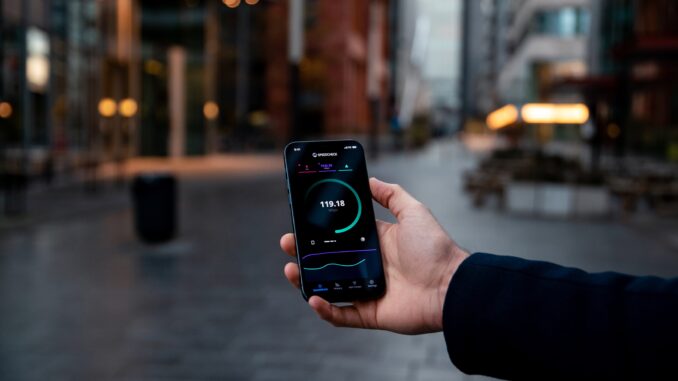
By Ken Figueredo, oneM2M MARCOMs Advisor
In the wake of multi-trillion-dollar projections and hype about billions of connected devices from ten years ago, the internet of things (IoT) has lost much of its excitement. Now, the early applications and underlying technologies associated with the IoT are a part of everyday life.
Operations managers simply expect to monitor and control widely dispersed machines at increasingly affordable costs. Similarly, consumers expect to monitor their homes and belongings remotely via simple to use Apps and home gateways. Within the technology industry, suppliers of IoT solutions and services know that they must tackle issues of scale and reuse to decrease costs further over the long term.
What do these developments tell us about key trends to watch in 2023? It is useful to think in terms of near-term dynamics and longer-term strategic developments when contemplating the future.
Near-term Boost for Smart Homes
The Connectivity Standard’s Alliance’s initiative in promoting the Matter connectivity protocol has revived interest in the connected home market. Large vendors recognize that a highly fragmented market for smart devices depends on interoperability. That requires industry coordination. The Matter protocol represents a technical carrot for innovators, retailers, and niche vendors. The commercial upside is that devices from multiple vendors can be deployed within larger and multi-purpose systems of connected devices.
Device vendors entering the market can capitalize on the bandwagon effects that large entities such as Apple, Amazon, Google, IKEA, and others are creating. They will also benefit from wider developer communities creating innovative, smart home services. There is considerable scope for innovation when considering the customer value proposition. For many consumers, the initial value proposition starts with convenience and in-home comfort. With the rise of home-delivery services, consumers have started to focus on safety in terms of who is visiting their homes and whether their deliveries are safe. In time, energy consciousness will result in homeowners seeking better insights into their utility costs and consumption patterns. These requirements and their evolution over time will affect the supply side of the smart home industry. As new expectations are set, one market consequence will be a spill over effect into smart buildings and shared public spaces such as transportation hubs.
Protecting Consumers
In anticipation of increasing numbers of consumer devices in the home, consumer bodies and regulators have raised concerns about privacy, safety, and security. As long as devices are inexpensive and perform a basic function, neither suppliers nor consumers care about security as things stand. That is what accounts for the use of weak passwords and an absence of mechanisms to patch software flaws. This is a problem as IoT blends into the infrastructure that enables everyday living. Two regulatory initiatives will drive industry change and hopefully increase consumer awareness about IoT devices and services.
One of these is taking place in the US where the government, acting on cybersecurity concerns, plans to introduce a labelling program for consumer IoT devices. Like the “Energy Star” rating system, the aim is to educate consumers about the risks associated with routers, smart speakers, connected door locks and security cameras. Currently, too many contain security vulnerabilities that would open the door to hacking and malicious attacks.
Similarly, the EU is set to enact the Cyber Resilience Act, requiring smart devices manufacturers to follow strict cyber security rules. Manufacturers would need to review their products’ risk profiles and fix any discovered vulnerabilities. They would need to notify the authorities within 24 hours if a problem or threat were uncovered. Failure to abide by the provisions could trigger fines as high as €15 million or 2.5% of global turnover and, potentially, a ban on sales.
Longer-term Foundations for Next Generation Communications
There are other developments in the IoT industry that are gathering momentum and likely to affect the long-term development of the sector. One of these involves the ease and real-time access to previously unavailable equipment data. Processing this data for insights and performance optimization relies on machine learning (ML) and artificial intelligence (AI) techniques. Connected-device vendors and solution providers will increasingly combine AI and IoT technologies for digital transformation solutions. Expect also to see progress on cross-silo data sharing frameworks that will improve the quality of insights from IoT data.
Another industry dynamic concerns the metaverse, currently a poorly defined concept. One way to think of its benefits is in terms of immersive education. An example might involve students studying biology using digitally rendered and interactive content. These capabilities would allow students to “walk” around a plant, digitally adjusting its scale to study tiny features. They might be able to run simulated experiments. Eventually, new classes of interface devices will allow them to experience touch and smell sensations. The delivery of metaverse experiences relies on IoT sensors and the application of IoT data to create digital twins of the objects being studied. Open standards that enable interoperability between different participants and their IoT sensors will be critical to capitalizing on the full benefits of metaverse concepts.
Sustainability is the third long term development that will shape consumer lives and business operations. As sensor affordability progressively improves, organizations will increasingly rely on IoT monitoring, decision support and remote-control capabilities to use resources sustainably. While IoT helps to reduce environmental impact and inefficiencies in farming, energy production and supply chain management, its own carbon footprint is easy to overlook. Commercial and regulatory pressures will incentivize organizations to deploy IoT responsibly and via an array of measures that span different equipment, design and operational aspects of IoT.
